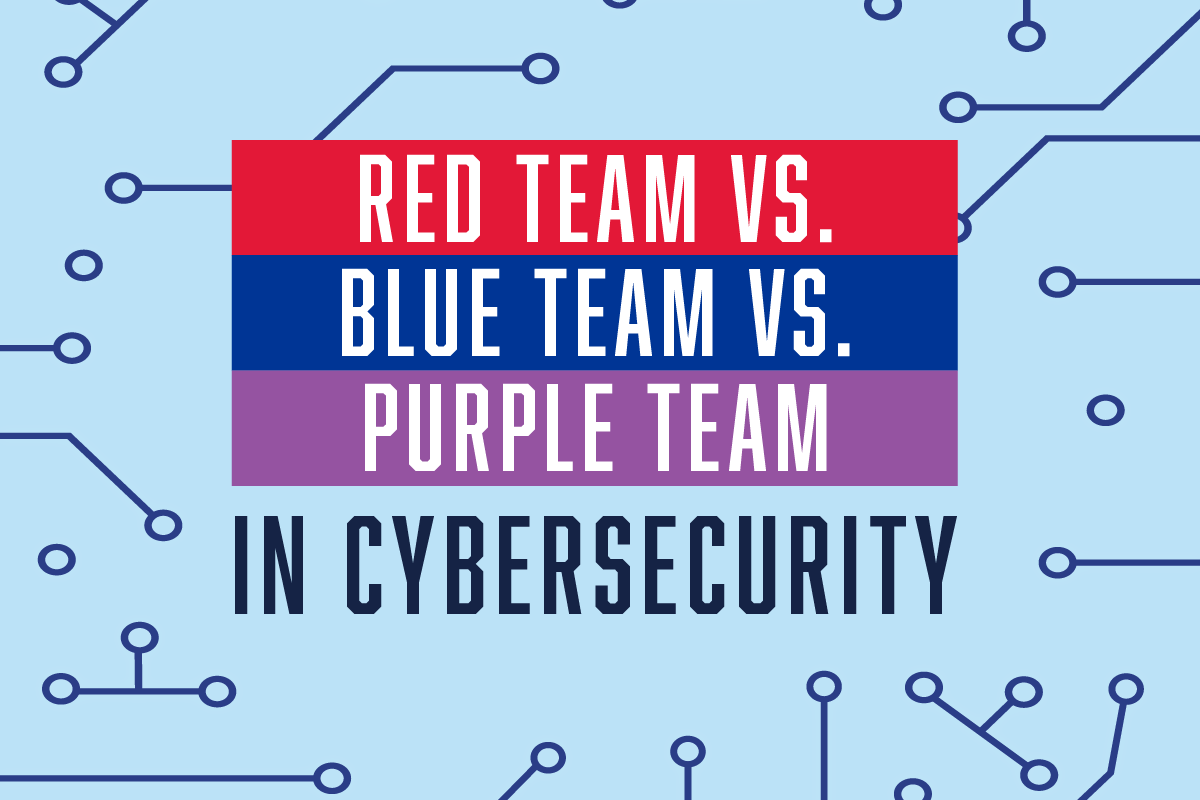Cybersecurity vs. Data Analytics: Similarities and Differences
Written by:
University of Tulsa
• Sep 9, 2024

Infrastructure was once the primary focus for information technology (IT) professionals, but as technology has become more deeply ingrained into society, additional disciplines have emerged. Two of these, cybersecurity and data analytics, are very different in many ways, but they intersect in several others. Examining these two fields, and their similarities and differences, is essential for choosing the right career path.
An online graduate program in cybersecurity can be a good choice for aspiring IT professionals who are considering a career in cybersecurity vs. data analytics and are interested in protecting the systems that drive the modern globalized world.
What Are Cybersecurity and Data Analytics?
Cybersecurity and data analytics are two different disciplines that fall under the IT umbrella. Data analytics is a branch of data science that focuses on extracting actionable insights from data, and cybersecurity focuses on safeguarding data.
Understanding Data Analytics
Data analytics focuses on the collection, analysis, and interpretation of often vast pools of data in an effort to discover actionable trends or insights that can positively impact business decisions. More than just a process, data analysis is a powerful tool that makes strategic planning possible, and it occurs in six steps:
- Defining Objectives: Every analysis seeks to meet an objective or answer a question, and defining those objectives early on is important for efficiency. This step also involves defining the metrics required to measure the outcomes of the analysis.
- Collecting Data: The next step involves collecting data that’s relevant to the defined objectives. Data collection can use various methods, including surveys or observations. It may even come from existing databases.
- Cleaning Data. Cleaning (or cleansing) data involves carefully checking for errors or irrelevancies and then removing that information from the data pool. When the data is more reliable, so are the insights it provides.
- Analyzing Data. Analysis can only occur once the data required for the objective has been collected and cleansed. Data analysts use one or more mathematical techniques or sophisticated software to find trends or patterns.
- Interpreting and Visualizing Data. Data visualization may involve translating the output of data analysis into visual formats, such as charts, graphs, and reports that others can easily share and interpret.
- Telling a Story. Finally, data analysis involves telling a story or creating a narrative that makes the findings easy to understand. The narrative often accompanies the visual aids and is geared toward nontechnical decision-makers within the company.
Understanding Cybersecurity
Cybersecurity protects data. This involves safeguarding against data leaks and preventing unauthorized personnel — including those within an organization and potential cybercriminals — from accessing secure networks containing sensitive or confidential information. Every modern business uses some sort of IT, and while some depend more heavily on the digital realm than others, protecting the data is essential to any organization’s success. There are several types of cybersecurity, including the following:
- Critical Infrastructure Security: Critical infrastructure security protects computers and networks that keep organizations operational. It also encompasses the technologies, processes, and protections companies have established to keep their critical infrastructure secure.
- Network Security: Network security is more specific and focuses primarily on firewalls, virtual private networks (VPNs), access control, antivirus and antimalware technology, and other safeguards that keep networks safe.
- Endpoint Security: An endpoint is any device connected to an organization’s network. This may include desktop computers and printers, and in contemporary settings, it may also include TVs and mobile devices.
- Application Security: Application security is a set of processes that keeps individual applications safe from cyber attacks. Examples are fixing bugs in an application’s code or writing new code to implement two-factor authentication.
- Information Security: Information security protects data. It applies to electronic health records (EHRs) in doctors’ offices and hospitals, customer and client information in large companies, and other forms of proprietary or personally identifiable information (PII).
- Cloud Security: Cloud-based data passes from different endpoints and applications regularly, exposing it to security risks. Cloud security keeps the data and applications safe from attacks.**
- Mobile Security: Mobile security is specific to smartphones; smartwatches; tablets; and other devices that contain, send, and receive personal information regularly.
- Internet of Things Security: The IoT connects high-tech devices, such as smart TVs; heating, ventilating, and air-conditioning (HVAC) systems; lights and controls; and refrigerators. Even these seemingly simple devices can provide an entry point for cybercrime.
Where Do Cybersecurity and Data Analytics Intersect?
Cybersecurity and data analytics are two very different disciplines, but they both play distinct and substantial roles in managing and protecting digital data. Understanding how the two fields work together in data privacy and compliance, behavior analytics, and risk management gives a clearer picture of the similarities.
Analyzing User Behavior
Data analysts can create baseline models to simulate how different user groups, including a target market, may behave in given scenarios. Cybersecurity professionals also use behavior analysis to predict the likelihood of a security breach.
Managing Risk
While data analysts quantify and assess risks by looking at historical data, cybersecurity professionals use risk assessments that come directly from data analysts. They do this to ensure the most useful allocation of security resources and the proper prioritization of responses and measures. For example, a clinical data analyst may look through health records for ways to improve patient outcomes while a cyber threat analyst works to protect those records from breaches.
Achieving Data Privacy and Compliance
Data analytics can measure and monitor network usage, including access to specific data pools, to provide insights into regulation and protocol compliance. Cybersecurity professionals use encryption and access control measures to further improve compliance.
Differences Between Cybersecurity and Data Analytics
Cybersecurity and data analytics have many differences. From their specific purposes to the techniques used to achieve the desired outcomes, five key considerations highlight these differences.
1. Purpose of Each Discipline
The purpose of cybersecurity is to protect data, networks, and associated systems from unauthorized access, including cyber attacks and data breaches. The purpose of data analytics, on the other hand, is to use data to uncover insights that can help organizations make better business decisions.
2. Key Activities
Cybersecurity professionals are responsible for designing, implementing, and maintaining the security measures that protect networks. They also monitor for threats, check for vulnerabilities in networks and systems, and respond to incidents when they occur. Data analysts oversee the collection, processing, and analysis of various data pools. They then analyze that data to find patterns and trends to use for actionable insights.
3. Techniques and Tools
Cybersecurity specialists are well versed in using tools such as firewalls, security protocols, and various systems to detect unauthorized network access and data breaches. Data analysts rely on statistical methods and models; machine learning; algorithms; and a wide range of visualization tools, such as graphs and charts, for data analysis and visualization.
4. Examples and Applications
Cybersecurity is essential for any organization that collects, stores, or uses sensitive online data, such as addresses, credit card numbers, or health records. It prevents unwanted access to these and other forms of data. Conversely, data analysis can be used to analyze customer behaviors or markets, providing critical intelligence that can help businesses grow.
5. Desired Outcomes
Cybersecurity keeps data and networks confidential, reducing downtime and potential data loss. Data analysis allows organizations to leverage data in new ways, which can be useful for product development and marketing purposes.
Education, Skills, and Experience Requirements
The education, skills, and experience required to enter the IT field as a data analyst or cybersecurity specialist are quite similar, but a few important differences should be kept in mind. Degree programs, certain key skills, and the level or type of experience may vary between the two fields.
Education and Experience Requirements
A bachelor’s degree is required to pursue an entry-level career as a data analyst or cybersecurity specialist, but as technology evolves and becomes more complex, employers may seek candidates with graduate-level education.
For data analysts, a master’s degree in data analytics, applied analytics, or data science provides in-depth education and can prepare professionals for high-paying, high-demand roles. For cybersecurity professionals, such as cybersecurity engineers, a master’s degree in cybersecurity teaches the relevant skills required to help organizations safeguard their data and systems.
At the entry level of each discipline, employers tend to hire candidates who’ve completed internships or apprenticeships in the IT sector. At higher levels, employers may seek candidates with anywhere from three to five years of experience.
Key Skills
Considerable overlap exists when comparing cybersecurity and data analytics skills. Both career paths exist in the IT sector; this means that much of the foundational knowledge remains the same. These skills include the following:
- Technical writing
- Coding
- Configuring networks
- Deploying hardware
- Managing databases
- Using operating systems
The technical competencies that data analysts should hone and develop include the following:
- Creating and implementing analytics systems
- Writing reports
- Finding patterns and trends in data
- Developing presentations
- Creating spreadsheets
- Knowing a statistical programming language
- Applying machine learning
- Using data visualization
Competencies more specific to a cybersecurity professional’s role include the following:
- Configuring and managing networks
- Programming
- Conducting penetration testing
- Installing and administering firewalls
- Identifying and managing risks
- Managing cloud systems and software
- Implementing automation
Certification and Registration
Data analysts and cybersecurity professionals may choose to seek optional certification or registration that hones specific knowledge in their fields. An advanced education, such as a master’s degree in cybersecurity or data analytics, can prepare prospective or current professionals for these credentials. The available certifications for data analysis and cybersecurity can suit either role, and two of the most coveted are the Security+ and Certified Information Systems Security Professional (CISSP).
The Security+ certification from CompTIA is ideal for entry-level positions, while the CISSP certification from ISC2 offers more prestige for experienced information analysts. Other certifications that cybersecurity professionals can pursue include the following:
- Certified Information Security Manager: The CISM certification from ISACA is the gold standard when it comes to the auditing, monitoring, and assessment of systems. The CISM is the preferred credential for those going into auditing.
- GIAC Penetration Tester: The GPEN certification from GIAC Certifications validates the candidate’s ability to use best practices and trusted methods to conduct penetration tests.
Careers in Cybersecurity vs. Data Analytics
Cybersecurity and data analytics both offer considerable employment and career opportunities.
Cybersecurity Careers
Many of the most popular specialized careers in cybersecurity fall into one of four categories: engineering and architecture, response and forensics, management and leadership, or cryptography**.** Roles in cybersecurity include computer forensic analyst, security manager, information security analyst, and chief information officer (CIO).
Computer Forensic Analyst
A computer forensic analyst is a skilled professional who specializes in recovering data following a cyber attack, a hardware or software malfunction, or even a natural disaster. They may also be called upon to recover deleted data from computers to aid in criminal investigations.
Forensic science technicians, including those working in computer science, earned a median annual salary of $64,940 as of May 2023, according to the U.S. Bureau of Labor Statistics (BLS). The employment of forensic science technicians is projected to rise by 13% between 2022 and 2032. As technology evolves, these individuals will be called upon to uncover and share appropriate data to ensure justice.
Security Manager
A security manager oversees an organization’s IT security measures. They work mainly with IT teams and aid in developing long-term strategies to thwart attacks. In some organizations, the security manager may also be responsible for developing policies and procedures as they relate to cyber attack responses.
Computer and information systems managers earned a median annual salary of $169,510 as of May 2023, according to the BLS. Those working in manufacturing and information-related organizations earned more than $175,000 and $183,000, respectively. The BLS projects employment in the field to skyrocket by 15% between 2022 and 2032 in response to the growing number of cyber attacks and the need to create strong security measures.
Information Security Analyst
An information security analyst plans and executes various security measures designed to protect their employers’ or clients’ networks and systems. They often work with other IT professionals to assess their responses and performance before making recommendations on how to bolster security measures.
Information security analysts earned a median annual salary of $120,360 as of May 2023, according to the BLS. The BLS projects employment in the field to increase by 32% between 2022 and 2032 in response to outside threats and hacks that can quickly overcome an organization’s computers and networks.
Chief Information Officer
ACIO holds an executive-level position within an organization and helps plan strategies to ensure that the organization meets its information-related goals. This individual designs, develops, and implements a company’s entire IT strategy, including budgeting and staffing the IT department.
Top executives, including CIOs, earned a median annual salary of $103,840 as of May 2023, according to the BLS. Individuals working in manufacturing earned a median salary of $239,000 or more, and those working in the professional, scientific, and technical services niche earned a median salary of $228,590. The BLS projects employment of top executives to grow by 3% between 2022 and 2032, driven by the need to effectively manage IT as technology rapidly evolves.
Data Analytics Careers
Data analysts, on the other hand, may choose to pursue one of the following career options:
- Chief Data Officer: A chief data officer occupies an executive-level position that involves monitoring and managing a company’s data strategy, including all aspects of IT.
- Clinical Data Analyst: A clinical data analyst works specifically with health providers to reduce costs or risks, improve patient outcomes, and otherwise aid in making important business decisions.
- Business Intelligence Analyst : A business intelligence analyst analyzes and interprets data, extracting insights that help shareholders, executives, and upper management make the best decisions for the future of an organization.
- Data Engineer : A data engineer builds the infrastructure that supports the collection, storage, and analysis of data.
- Financial Analyst: A financial analyst focuses primarily on the financial side of data analysis, helping organizations reduce overhead costs while bringing in more revenue.
Cybersecurity vs. Data Analytics: Job Outlook
Careers in IT are on the rise, and the demand is only expected to increase in the coming years. Both data analysts and cybersecurity professionals can anticipate considerable job security due to the increased need for better security and better data for decision-making.
Cybersecurity Career Outlook
According to IBM’s Cost of a Data Breach 2024 report, the average cost of a single data breach globally was $4.48 million in 2023 — the highest on record and a 10% increase over 2022. Companies are increasingly hiring skilled professionals to mitigate these risks, ultimately saving money.
The BLS also projects that employment of information security analysts, including cybersecurity specialists, will grow by 32% between 2022 and 2032, much higher than the 3% projected for all careers. The reason is that cyber attacks are likely to become more problematic, costly, and frequent.
Data Analysis Career Outlook
According to Rivery, the world generates 2.5 quintillion bytes of data every single day, and the volume of data that exists in the world — on hard drives and in the cloud — doubles in size every single year. The demand for qualified, skilled professionals to analyze and interpret these vast stores of data is on the rise.
The BLS projects that employment of data scientists, including data analysts, will rise by 35% between 2022 and 2032, much higher than the national average. Data-driven decisions help businesses move forward, often ahead of the competition. Good data analysis allows organizations to operate more efficiently, reach a broader audience, and reduce risks.
Help Future Organizations Grow in an In-Demand IT Discipline
Cybersecurity and data analytics are dynamic, fast-growing fields that offer opportunities for advancement. From engineering and data science to penetration testing and risk management, the possibilities are endless.
The University of Tulsa’s online Master of Science (M.S.) in Cyber Security is an excellent degree program for aspiring or working IT professionals who are interested in protecting future organizations from highly sophisticated unseen threats. Our online delivery format makes it accessible, and with technical or leadership tracks, you can personalize your education to your goals.
Discover how you can safeguard society with a career in cybersecurity.
Recommended Readings
AI Threat Detection in Cybersecurity
Software Engineer vs. Cybersecurity Specialist
Cyber Intelligence: Definition and Career Opportunities
Sources:
AnalyticsForDecisions.com, “Data Analytics vs. Cyber Security: A Comprehensive Comparison”
CompTIA, “Boost Your Career With the Best Cybersecurity Certifications for 2024”
CompTIA, “Cybersecurity and Data Analytics: Double Dipping on Two Hot Trends”
CompTIA, What Is Cybersecurity?
GIAC Certifications, GIAC Penetration Tester Certification (GPEN)
Indeed, “18 Key Data Analyst Skills to Get You Hired in 2024”
Indeed, 17 Skills You Need for an IT Job
Indeed, “12 Must-Have Cybersecurity Skills (and How to Improve Them)”
ISC2, CISSP: Certified Information Systems Security Professional
Rivery, “Big Data Statistics: How Much Data Is There in the World?”
Syntax Technologies, “The Intersection of Data Analytics and Cybersecurity”
U.S. Bureau of Labor Statistics, Computer and Information Systems Managers
U.S. Bureau of Labor Statistics, Data Scientists
U.S. Bureau of Labor Statistics, Forensic Science Technicians
U.S. Bureau of Labor Statistics, Information Security Analysts
U.S. Bureau of Labor Statistics, Top Executives
WCSIT, Comparing Cybersecurity and Data Analytics: A Detailed Dive


